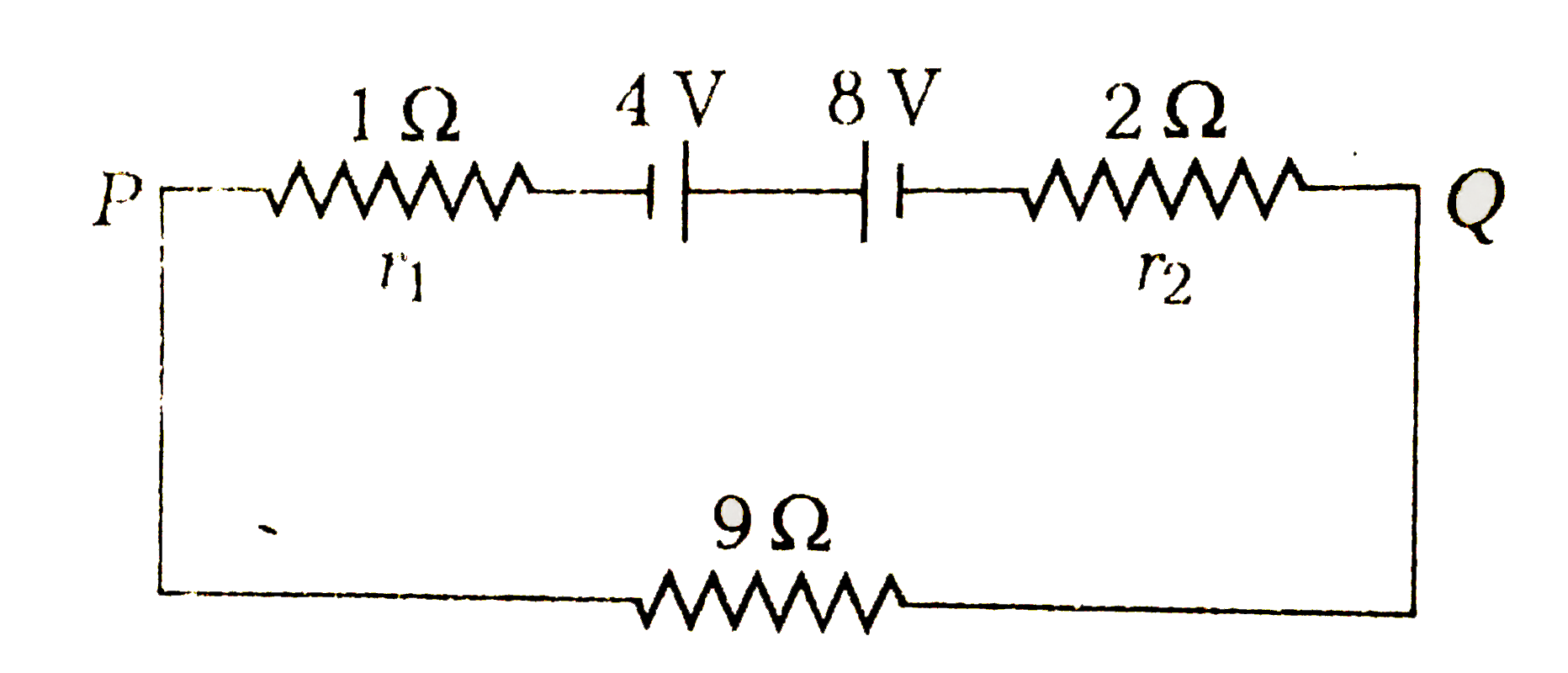A thermocouple circuit consists of two thermal junctions and a low-resistance galvanometer , all in series. The galvanmeter has a resistance of 8Ω and the rest of the circuit has a resistance of 1.6Ω . The temperature develops an emf of 10 microvolt per degree Celsius difference of temperature between the two junction. When one junction is kept is 0∘C and the other in a molten metal, the galvanmeter reads 8 millivolt. What is the temperature of the molten metal? Assume that the emf varies linearly with the temperature difference.
Topper's Solved these Questions
- THERMOELECTRICITYBOOK - SL ARORACHAPTER - THERMOELECTRICITYEXERCISE - Problems for Self Practice
13 Videos
- THERMOELECTRICITYBOOK - SL ARORACHAPTER - THERMOELECTRICITYEXERCISE - Problems for Self Practice
13 Videos
- SOLIDS AND SEMICONDUCTOR DEVICESBOOK - SL ARORACHAPTER - SOLIDS AND SEMICONDUCTOR DEVICESEXERCISE - PROBLEM_TYPE
9 Videos
- TRANSIENT CURRENTBOOK - SL ARORACHAPTER - TRANSIENT CURRENTEXERCISE - Type D
13 Videos
Similar Questions
A metallic wire has a resistance of 3.0Ω at 0∘C and 4.8Ω at 150∘C. Find the temperature coefficient of resistance of its material.
View SolutionFor a thermocouple, the neutral temperature is 270∘C and the temperature of its cold junction is 20∘C . If there is no deflection in the galvanometer, the temperature of the hot junction should be
View Solution
Knowledge Check
A thermocouple of resistance 1.6Ω is connected in series with a galvanometer of 8Ω resistance. The thermocouple develops and e.m.f. of 10μV per degree temperature difference between two junctions. When one junction is kept at 0∘C and the other in a molten metal, the galvanometer reads 8 millivolt . The temperature of molten metal, when e.m.f. varies linearly with temperature difference, will be
A960∘CB1050∘CC1275∘CD1545∘CFor a thermocouple, the neutral temperature is 270∘C and the temperature of its cold junction is 20∘C . If there is no deflection in the galvanometer, the temperature of the hot junction should be
A210∘CB540∘CC520∘CD209∘CThe neutral temperature of a thermocouple is 350∘C when the cold junction is at . 0∘C When the cold junction is immersed in a bath of 30∘C, the inversion temperature is
A700∘CB600∘CC35∘CD670∘C
A circuit consists of 1Ω wire in series with a parallel arrangement of 6Ωand3Ω wires. Calculate total resistance of the circuit.
View SolutionIf the cold junction of thermocouple is kept at 0∘C and the hot junction is kept at T∘C, then the relation between neutral temperature (Tn) and temperature of inversion (Ti) is
View SolutionTwo batteries of emf 4 V and 8 V with internal resistances 1Ω and 2Ω are connected in a circuit with a resistance of 9Ω as shown in figure. The current and potential difference between the points P and Q are

View SolutionIf the cold junction of thermocouple is kept at 0∘C and the hot junction is kept at T∘C, then the relation between neutral temperature (Tn) and temperature of inversion (Ti) is
View SolutionTwo batteries of emf 4 V and 8 V with internal resistances 1Ω and 2Ω are connected in a circuit with a resistance of 9Ω as shown in figure. The current and potential difference between the points P and Q are

View Solution
